Every offseason, Football Outsiders compiles a list of unheralded players who have the chance to become stars or major contributors. We use certain criteria to find the best young players who weren't high draft picks and still haven't had too much playing time but could be on track to become significant contributors.
What would that list look like now, as opposed to in the next offseason?
What follows is the Football Outsiders Top 25 Prospects list, based on which players would qualify right now. Some of these players could play their way off the list as their snap counts rise over the final two months of the season, while others might still be fairly unknown when we get to next year's training camp. But all of them are players to watch in the NFL going forward.
The criteria to make this list:
Third-round pick or lower, or undrafted, from the classes of 2016 to 2018
500 or fewer offensive or defensive career snaps through Week 10 of 2018 (except running backs, with a maximum of 300 snaps)
No signed contract extension
Age 26 or younger
Last year's midseason prospects list can claim several NFL stars, including Alvin Kamara, Aaron Jones, Desmond King and George Kittle. This year's list, we're going to warn you now, is stuffed to the gills with defensive linemen. It was a big draft class for them, including our No. 1 overall prospect:
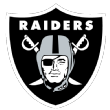
1. Maurice Hurst, DL, Oakland Raiders
Age: 23 | Snaps through Week 10: 354 | Drafted: Round 5 (2018)
The easiest players to project onto this list are ones who fall in the draft for reasons over which they have no control. Had we been doing a midseason list the year that LSU's La'el Collins fell in the draft because his name was being discussed around a double homicide, for instance, he would've been an easy pick. Great player plus bad circumstance usually equals a good opportunity for value.
Hurst wrecked shop at Michigan, totaling 32 tackles for loss and 15.5 sacks in three seasons. But alarms went off at the NFL scouting combine because of a heart condition. If your favorite team's medical staff had cleared Hurst, though, it was obvious what kind of player he was. Hurst collected his third sack in Week 10, to go along with four hurries (all hurries quoted are from Sports Info Solutions, through Week 10), and at this point he's the only thing Raiders fans have any rational reason to be optimistic about. Hurst fits another one of the classic undervalued draft archetypes: the smaller defensive tackle who creates havoc inside yet falls because NFL scouts don't take him seriously because of his size. The patron saint of that category is Aaron Donald, who didn't go in the top 10 despite being the best player in the 2014 draft. We think the Raiders would be very happy if Hurst followed in the more reasonable footsteps of Geno Atkins or Grady Jarrett.

2. Justin Reid, S, Houston Texans
Age: 21 | Snaps through Week 10: 466 | Drafted: Round 3 (2018)
Reid wasn't expected to be an every-down starter this early, but a rash of cornerback injuries forced the Texans away from their initial plan to convert Kareem Jackson to safety, bumping Reid into the lineup. Reid has been a big part of Houston's third-ranked DVOA defense. He has missed just one tackle all season and has been nearly flawless when asked to play deep safety.
Reid was an easy NFL projection: the brother of an NFL safety and someone who hit all the physical checkmarks and produced at Stanford. He picked off five balls as a junior and already has two interceptions in his rookie season. The general devaluation of the safety position is about the only reason we can think of for him being available in the third round. The Texans, who had no picks in the first two rounds, will take it.
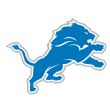
3. Da'Shawn Hand, DT, Detroit Lions
Age: 23 | Snaps through Week 10: 344 | Drafted: Round 4 (2018)
Hand was the consensus No. 1 recruit in his class coming out of high school in 2014 but didn't really live up to expectations at Alabama. He had great technique and strength, but he wasn't the focal point of the Crimson Tide defense. Hand paired that résumé with a subpar combine in which he ran a self-destructive 7.98-second three-cone drill and fell all the way to the fourth round. The one saving grace was his 34⅜-inch arm length; some NFL teams measure pass-rushers by how much distance they can gain with their arms.
Despite the subpar college career, Hand has become a force for the Lions. He has 13 hurries to go along with three sacks and two forced fumbles. Hand has made Kerry Hyder irrelevant on this defense, which is a pretty strong endorsement in and of itself given how good Hyder had been for the Lions. Sometimes pro-level coaching and training can take an underachieving college player and raise him to the next level. That's about the gist of what has happened here.
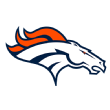
4. Phillip Lindsay, RB, Denver Broncos
Age: 24 | Snaps through Week 10: 252 | Drafted: Undrafted (2018)
While there is a segment of the football snobberati that might go a little too far in its criticism of drafting running backs early, it's hard to argue with the main point, that it's not hard to find a running back with skills in the later rounds. In Lindsay's case, he went completely undrafted out of Colorado, mostly due to concerns about his 5-foot-8, 190-pound frame. Lindsay ran for 2,726 yards in just his final two seasons with the Buffaloes, adding 30 rushing touchdowns. He even ran a 4.39 40-yard dash at his pro day. And yet nobody wanted to spend a pick on him.
Nine games later, he has a huge share of the Broncos' workload, beating out more highly drafted competition. His 25 broken tackles (per SIS, through Week 10) were tied for 10th in the NFL. He leads all qualifying NFL backs in rushing DVOA, despite playing in a limp passing offense. It's already clear that the NFL misevaluated Lindsay. The question at this point is how much the Broncos want to trust him -- is he going to be the next Arian Foster, or is he more of a great complementary back like Giovani Bernard?

5. Keke Coutee, WR, Houston Texans
Age: 21 | Snaps through Week 10: 198 | Drafted: Round 4 (2018)
Coutee wasn't deeply appreciated by the "talk to the scouts" crew, who tend to disregard production coming out of lower-profile Air Raid schools like Texas Tech. Coutee was also dinged at the NFL combine, where he had subpar showings across the board -- aside from his 4.43 40-yard dash time -- and where he measured in at 5-foot-9, 181 pounds.
So it said a lot that the Texans still believed he was worth taking in the fourth round. Despite dealing with hamstring troubles all season, Coutee caught 11 balls in his first game in Week 4. He's got the speed to threaten the deep post from the slot but hasn't been utilized like that yet as Houston had a healthy Will Fuller to play with early in the season. With Demaryius Thomas now in the fold, look for the Texans to expand Coutee's deep role. He has the skill set to handle a ton of targets. Can his frame handle the pounding an every-down slot receiver takes in the NFL?

6. Orlando Brown, OT, Baltimore Ravens
Age: 22 | Snaps through Week 10: 244 | Drafted: Round 3 (2018)
Seen by most as a potential first-round pick for the majority of the draft process, an abysmal combine sank Brown's draft stock. Notably, he ran a 5.68 40-yard dash, with a 3.29 20-yard split. This saw him tumble all the way down to the third round.
Where Brown wins is much simpler: He's a mountain of a man. At 6-foot-7 and 345 pounds, with a 85⅛-inch wingspan, he is often too much for anybody to get around. Despite his dreadful combine performance overall, he still put on a respectable three-cone drill time of 7.87. That points to his ability to win with agility in a tight area. He's always going to have warts: He doesn't have a low center of gravity, and he will produce some memorable highlights for opponents because of that. But given where we are with tackle play around the NFL, it was baffling Brown made it to the third round, and he should at least be a solid bookend for the Ravens across from Ronnie Stanley.
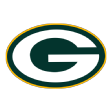
7. Marquez Valdes-Scantling, WR, Green Bay Packers
Age: 24 | Snaps through Week 10: 362 | Drafted: Round 5 (2018)
Valdes-Scantling had scintillating tools in college but needed to improve on pretty much everything coming out of South Florida. A 6-foot-4 build with a 4.37 40-yard dash got everybody's attention at the combine, and thus he wound up being picked in the fifth round as the Packers swooped in on a number of receivers to try to replace Jordy Nelson.
Valdes-Scantling has become the main deep receiver of that crew of draft picks, sliding in after Geronimo Allison's injury opened the door. He's just a few targets short of qualifying for our main receiving ranking board but has 51 DYAR despite a 59 percent catch rate. It's easy to imagine Valdes-Scantling getting better, because he already has the toughest jobs down and has shown the ability to grow early in his career. If Valdes-Scantling can get his route-running and technique upgraded, he could be a force for Green Bay's offense for years to come.

8. Lorenzo Carter, Edge, New York Giants
Age: 22 | Snaps through Week 10: 253 | Drafted: Round 3 (2018)
When the Giants snagged Carter in the third round, they were making a bet on tools over production. Carter's 4.5 40-yard dash and explosive results in the vertical and broad-jump metrics made him someone who fit the NFL mold of a top edge rusher. The result at Georgia? Not so much. Carter had just 14 sacks despite serious playing time in all four seasons with the Bulldogs. Our SackSEER projection system took the middle ground, projecting him for 18.3 sacks in his first four seasons on the basis of the athleticism.
Carter's early returns have been pretty good: two sacks and six hurries in a limited number of snaps. The Giants have mostly been using him behind Kareem Martin and Connor Barwin, but one can imagine a lot more late-season playing time as they try to figure out exactly what they have here. (There's also a healthy Olivier Vernon to contend with.) Carter has one of the widest variances of anyone on this list. We wouldn't be surprised if he's a star, and we wouldn't be surprised if he never became a full-time starter. If his physical profile wins out, you can expect production along the lines of another Georgia product: Bears edge player Leonard Floyd.

9. Mason Rudolph, QB, Pittsburgh Steelers
Age: 23 | Snaps through Week 10: 0 | Drafted: Round 3 (2018)
Rudolph threw for 13,618 yards and 92 touchdowns at Oklahoma State, giving him plenty of clout with scouts as a potential first-round pick. Instead, he slid to the third, where the Steelers picked him as a potential future replacement for aging quarterback Ben Roethlisberger. QBASE, our quarterback projection system, gave Rudolph a middling projection. He ate up a lot of cream-puff defenses with the Cowboys in the Big 12, and that, combined with the third-round projection, were the reasons his statistics didn't translate to greatness for QBASE.
Rudolph had a somewhat uneven preseason, throwing a pick-six and completing just 54.5 percent of his passes. However, he did average 7.2 yards per attempt. It's easy to see how and why the Steelers valued him in comparing him to Roethlisberger. Rudolph has great accuracy in the vertical passing game, and he is more than willing to stand in the pocket and take shots to complete those deep balls. If he can develop short-game accuracy and better pocket awareness under pressure, he's got the tools to be an NFL starter. If he stalls out, well, Zach Mettenberger had plenty of fans, too.

10. Genard Avery, LB/Edge, Cleveland Browns
Age: 23 | Snaps through Week 10: 416 | Drafted: Round 5 (2018)
Avery had a unique role at Memphis. He had 33 tackles for loss and 13.5 sacks in his final two seasons, but he also had the versatility to play inside linebacker. He broke up four passes and picked off two others in his final couple of college seasons. A 4.59 40-yard dash and a 6.9-second three-cone drill at the combine put him in some rare air. The issues that knocked him down to the fifth round are (a) his 6-foot-0 frame and (b) having his versatility confused for not having a real calling card.
For the Browns, Avery has already racked up 11.5 pressures and two sacks off the edge, where he has outperformed 2016 second-round pick Emmanuel Ogbah. The only real demerit has been that the versatility in coverage has not quite translated from Memphis to the pros: Avery is lost in coverage right now when asked to do that.
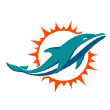
11. Jerome Baker, LB, Miami Dolphins
Age: 21 | Snaps through Week 10: 439 | Drafted: Round 3 (2018)
The scuttlebutt on Baker was pretty simple: He's one of those new-age sideline-to-sideline linebackers. He ran a 4.53 40-yard dash at the combine and has the range to get just about anywhere on a football field. Scouts dinged him for his play against the run, noting that he would get pushed around and stuck on blocks, and wondered if he'd be able to tackle NFL ball carriers.
Early returns on that? Pretty positive! SIS has Baker with just one broken tackle through 10 weeks. Baker hasn't been a dominant force against the run, but he has been fine; most offenses are targeting their runs at Kiko Alonso instead. Baker has the tools to be a Telvin Smith type who can cover tight ends and running backs while also being a positive on run downs.

12. Mark Andrews, TE, Baltimore Ravens
Age: 22 | Snaps through Week 10: 238 | Drafted: Round 3 (2018)
Andrews took a lot of flak from NFL teams and the draft community for a complete inability to block in college, but he has been pretty solid as a pass-blocker for the Ravens when he has been called upon. He won't win the line of scrimmage as a run-game player too often, but he has the size to be an obstacle.
What Andrews brings is the ability to be a big part of a passing offense at tight end. He had 958 receiving yards in his junior season and was a core reason Oklahoma's opponents couldn't really handle the offense. If they keyed on the pass offense, Andrews was blocking a small college corner. If they keyed on the run offense, Andrews was a physical mismatch. The Ravens will eventually work first-round pick Hayden Hurst into a bigger role, we think, but Andrews has shown enough to stick as a core part of their offense. Through Week 10, he's 10th among qualifying tight ends in DVOA despite not having a high catch rate.
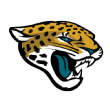
13. Ronnie Harrison, S, Jacksonville Jaguars
Age: 21 | Snaps through Week 10: 184 | Drafted: Round 3 (2018)
Another Nick Saban safety, Harrison combines a massive 80¾-inch wingspan with his speed to make him a sideline-to-sideline player. He got on the field as a sophomore at Alabama, which is no small feat, and shows versatility and skill. He's most notable for bringing the hammer; he's an impact tackler who can disrupt receivers and runners to create turnovers.
Harrison is essentially the understudy for Jaguars safety Barry Church; he's capable of playing either deep safety or in the box, but projects better in the box as a run stuffer. The Jaguars have mostly committed to big nickel as a base defense, making Harrison a potential fit like Mark Barron or Patrick Chung in that role. Despite drawing acclaim from most draftniks, Harrison is not really a man-coverage player, which could limit his ceiling if he doesn't develop that part of his game further.
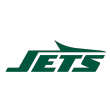
14. Nathan Shepherd, DT, New York Jets
Age: 25 | Snaps through Week 10: 253 | Drafted: Round 3 (2018)
Shepherd was another guy who saw wide appeal throughout the draftnik community; both those who watched the tape and those who mainly talked to scouts found something to like here. A Canadian entrant from Fort Hays State, Shepherd took well to his one chance at real competition in the Senior Bowl, turning heads before breaking his hand in practice. He has a neat backstory as well, as a 205-pound high school linebacker who had a late growth spurt.
Helping out the Jets next to Leonard Williams, Shepherd has six hurries and three quarterback hits. A best-case scenario for Shepherd could be following in the footsteps of a similarly sized interior player on our offseason list who has blown up this season: Browns defensive tackle Larry Ogunjobi.

15. Tyrell Crosby, OT, Detroit Lions
Age: 23 | Snaps through Week 10: 13 | Drafted: Round 5 (2018)
Crosby was a surprise faller in the draft process, as most draftniks assumed he would be a top-50 pick. He played with terrific strength at Oregon and showed above-average athleticism at the combine. Most comments we heard about Crosby this fall tended to be about scouts not liking his body and the way it held its weight. Fast-forward and here's a player who could be a long-term starter at right tackle who was available in the fifth round. The Lions aren't complaining too much.
Crosby's issue with getting on the field in Detroit has been that Rick Wagner and Taylor Decker are both healthy. In fact, for the first time in a long time, Detroit's offensive line is relatively solid. That makes Crosby a luxury for now, but one that should reap rewards for the Lions down the road.

16. Tre'Quan Smith, WR, New Orleans Saints
Age: 22 | Snaps through Week 10: 320 | Drafted: Round 3 (2018)
Smith was a player whom scouting-focused draftniks were higher on. It makes sense, because in theory, he should be able to catch everything. At 6-foot-1, 203 pounds, and a tested 80⅜-inch wingspan, Smith's combine was all about proving that he was the kind of receiver to win one-on-one against a smaller cornerback. Draft writers who actually watched him play at UCF were a little less sanguine, pointing at the fact that he didn't dominate competition that should have had no business hanging with him physically. Despite that, our Playmaker Score metric loved him, giving him a rating of 92.7 percent and noting that he was the only underclassman receiver in the 2018 draft who scored a touchdown on more than 3 percent of his team's pass attempts. Smith had Playmaker Score's highest rating in this class.
Essentially taking over Ted Ginn Jr.'s role in New Orleans' offense after Ginn went on injured reserve, Smith has shown a lot of early success with a 22.2 percent DVOA on his first 20 targets. However, it's worth noting that Dez Bryant was brought in and would have usurped some of his targets had the veteran not immediately fallen injured, and that the record-breaking Drew Brees touchdown he caught was wide open. We're a little cautious on this placement because we haven't seen a whole lot driving that high DVOA outside of the offense he's in.

17. Alex Anzalone, LB, New Orleans Saints
Age: 24 | Snaps through Week 10: 387 | Drafted: Round 3 (2017)
The player who got hurt often in college got hurt early in the NFL, missing all but four games of his rookie season after shoulder surgery. This was the player that Anzalone was at Florida: a great linebacker with the ability to play in coverage everywhere and the instincts to diagnose correctly at the line of scrimmage. Also: a player who missed all but 18 games in his time with the Gators.
Being used in 2018 in a platoon-linebacker situation where he takes over on passing downs, Anzalone has shown off impressive range and coverage. He's a big part of the reason the Saints have limited opposing tight ends to a minus-26.5 percent DVOA, fifth-best in the NFL. To be honest, we're not quite sure why A.J. Klein is starting over him on run downs. Perhaps it's precautionary and the Saints want to protect Anzalone for when he can make the biggest impact?
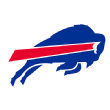
18. Taron Johnson, CB, Buffalo Bills
Age: 22 | Snaps through Week 10: 332 | Drafted: Round 4 (2018)
Slot cornerback is not a position where the results have a strong year-to-year correlation. Kendall Fuller was one of the best slots in the business last season, and this season he has given up 9 yards per pass. But it's worth recognizing how great Johnson has been for the Bills this season. Through Week 10, he's allowed just 2.7 yards per pass, with a 71 percent success rate, per Sports Info Solutions data.
Johnson is a pure slot cornerback, checking in at 5-foot-11, 192 pounds at the NFL combine. Coming out of tiny Weber State, where he starred as a true freshman, Johnson plays bigger than his size in the run game. He isn't afraid to get physical and in fact can often get downright grabby in coverage. There's not a lot of upside in Johnson -- he already is all that he can be -- but good slot cornerbacks are very valuable in the current NFL.

19. Royce Freeman, RB, Denver Broncos
Age: 22 | Snaps through Week 10: 163 | Drafted: Round 3 (2018)
Freeman is the player who was supposed to be in the spot that Lindsay is in, but his early NFL career has seen him forecast as more of a between-the-tackles, red zone-focused player. At nearly 230 pounds, it's pretty easy to understand why the Broncos have let him be that player. Freeman was BackCAST's second-favorite prospect in the draft behind Saquon Barkley. But his RecIndex, a number meant to look at how likely he was to become a threat in the passing game, was merely average.
Among backs without enough carries to qualify, Freeman's DYAR through Week 10 is ninth in the NFL. Freeman can be both a great player and a running back who doesn't have quite as much value in today's NFL because of his lack of passing-game play. Either way, the Broncos are probably quite happy with how he has performed thus far. He and Lindsay will combine to create a cheap, effective running back combination while Denver figures out what to do about quarterback.

20. Josh Sweat, Edge, Philadelphia Eagles
Age: 21 | Snaps through Week 10: 25 | Drafted: Round 4 (2018)
Sweat blew up our SackSEER system this offseason, and it's all on athleticism. He ran a 4.53-second 40-yard dash at the NFL combine and had terrific scores in the vertical leap and broad jump as well. Thus, despite classifying him with a lower projection on the basis of his projected draft round, SackSEER still thought he was about as good as any of the pass-rushers who went after the first round (outside of Harold Landry, who should have been drafted in the first). Sweat's 14.5 sacks in three seasons was not all that impressive, but the tools should make him play above that number.
Sweat's rookie season in Philadelphia has been invested in watching the fearsome veterans the Eagles have assembled kick butt and take names. The Howie Roseman Eagles have a long history of young linemen watching early, then getting up to speed quickly once given a chance. Vinny Curry comes to mind as an easy apples-to-apples comp for Sweat.

21. Chris Wormley, DT, Baltimore Ravens
Age: 25 | Snaps through Week 10: 376 | Drafted: Round 3 (2017)
Wormley's career at Michigan boiled down to his being a steady, relentless contributor inside on a terrific defensive line. So far with the Ravens, his career has ... seen him be a steady, relentless contributor inside on a terrific defensive line. Talk about a projection.
Wormley has developed into a better pass-rusher this season, with nine hurries, per SIS, despite playing on the interior. When he and Michael Pierce are both healthy and playing well, the Ravens are able to generate one-on-one wins inside quite easily on passing downs. That's a big part of the reason Baltimore is seventh in defensive-adjusted sack rate despite not having a true No. 1 edge rusher. (Yes, Terrell Suggs is going to the Hall of Fame, but he's not the player he was in his 20s.)

22. Sam Hubbard, Edge, Cincinnati Bengals
Age: 23 | Snaps through Week 10: 289 | Drafted: Round 3 (2018)
Hubbard came out of Ohio State with an interesting blend of average physical tools but wildly good production. He managed 30 tackles for loss and 17 sacks over three seasons with the Buckeyes but didn't take the next step everyone expected in production when Joey Bosa left and Hubbard was allowed to take over as the starting end. Hubbard performed well on the three-cone drill at the NFL combine, posting a 6.84 at 270 pounds.
His early career with the Bengals has been fine: two sacks, two hurries. But he has also played inside a lot on passing downs, often to accommodate for Carl Lawson and Carlos Dunlap. With Lawson hurt, Hubbard might get more of a chance to contribute as a pass-rusher. We think a good comparison for him is Jared Crick coming out of Nebraska. Like Crick, Hubbard is technically sound. And, like Crick, a lot of his college production came when he was not the focal point of a rush. Hubbard can grow into a good second end.

23. Holton Hill, CB, Minnesota Vikings
Age: 21 | Snaps through Week 10: 125 | Drafted: Undrafted (2018)
Hill was kicked out of Texas for violating team rules, reportedly failing several drug tests while at UT. On talent alone, though, Hill fits a lot of what the NFL wants out of its cornerbacks. He checked in at 6-foot-1 and 198 pounds at the combine, and he has the length to develop into a terrific press cornerback. He also started for the Longhorns as a true freshman before Tom Herman came to town.
The Vikings have dealt with a lot of cornerback injuries this season, so Hill actually got a chance to jump into the starting lineup in Week 8. Through two weeks as a full-time player, the results have been pretty nice. Hill has allowed just 5.6 yards per pass and has limited opposing receivers to 0.8 yards after the catch, per Sports Info Solutions' charting. Like any rookie, he's bound to give up some big plays early -- cornerbacks are the position most likely to look bad on the field -- but he also has a ceiling that most undrafted players can't come close to.

24. Poona Ford, DT, Seattle Seahawks
Age: 22 | Snaps through Week 10: 102 | Drafted: Undrafted (2018)
Run on undrafted Longhorns! Ford went undrafted coming out of Texas because he's downright short for a tackle at just 5-foot-11. However, he did come up with 20.5 tackles for loss at Texas, and he does anchor well enough to play nose tackle in the NFL, given how the standards are changing for defenses. Ford wasn't invited to the combine, but he did notch a sack of Josh Allen in the Senior Bowl.
Ford was outstanding in the preseason for the Seahawks, making the roster as a free agent and eventually kicking veteran free-agent signing Tom Johnson entirely off the team. He has been the best interior player in Seattle this season, even in limited snaps. Next up? He's coming for Shamar Stephen's starting role inside.

25. B.J. Hill, DL, New York Giants
Age: 23 | Snaps through Week 10: 267 | Drafted: Round 3 (2018)
Hill was drafted to play the 3-technique in New York's 3-4, and his main issue coming out of college was that scouts wondered about his functional strength. Hill was more of a penetrator in college, and a number of draftniks wondered how playing next to Bradley Chubb informed the damage he was able to bring. A nice three-cone drill time at the NFL combine (7.28 for an interior lineman!) helped solidify his draft position.
Hill has anchored well thus far in the pros, providing a little bit of passing-down pop, with three hurries and two sacks. The run defense is far more telling for his future. If he can continue to win one-on-one inside in passing situations, the Giants will have another building block for their front seven as they look to the future.
Honorable mentions
Jordan Akins, TE, Houston Texans
Josh Adams, RB, Philadelphia Eagles
Dreadrin Senat, DT, Atlanta Falcons
Harrison Phillips, DT, Buffalo Bills
Michael Gallup, WR, Dallas Cowboys
DaeSean Hamilton, WR, Denver Broncos
Josey Jewell, LB, Denver Broncos
Kenny Young, LB, Baltimore Ravens
Derek Rivers, Edge, New England Patriots
Trey Hendrickson, Edge, New Orleans Saints
Ja'Whaun Bentley, LB, New England Patriots
Vince Taylor, DL, Miami Dolphins
